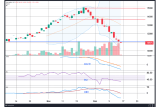
West Africa isn’t just driving demand for Capes. In the last year, Handymax (45k-70k dwt) vessels have recorded a notable lift in ex-West Africa cargoes, up 9.0 Mt year-on-year at 27.4 Mt in January-September. Of note, there was a sizeable lift from Guinea (1.8 Mt to 5.0 Mt), Gabon (1.0 Mt to 4.5 Mt) and Liberia (3.8 Mt to 6.2 Mt).
Guinea’s growth has largely consisted of bauxite shipments, and while total exports have grown (+24% y-o-y in Jan-Sep), this hasn’t all been absorbed by Capes. Within the overall lift, the share on Handymax vessels rose 1 pp to 5%. More importantly, Handymax tonnemiles have more than doubled. While the vessel segment had typically been used for intra-Guinean trade and shipments to Ireland, in the first eight months of 2025 exports to China rose 1.6 Mt to 1.8 Mt, driving this tonne-mile increase.
The large shift onto Handymaxes began in 4q24 amid logistical issues, hindering trans-shipments onto Capes. At its peak in early March, there were 30 (+71%) more Cape vessels waiting off Guinea than in the same period the year before. However, this growth in the use of Handymax vessels hasn’t been limited to Guinea.
Gabon’s primary dry bulk export is manganese ore. Of which, total exports fell 3% y-o-y in Jan-Sep, though the share exported on Capesize vessels dropped 19pp to 14% while the Handymax share climbed 20pp to 82%. The largest destination for this ore, typically used in steelmaking, is China and India, again providing strong tonne-mile growth to the smaller vessel segment.
Meanwhile, Liberian iron ore export growth has further benefitted the Handymax segment. Total exports increased 4.2 Mt y-o-y to 6.6 Mt, with Handymax vessels accounting for 90%. These shipments are primarily destined for Europe.

While geared vessels are suited to smaller ports, the increase at the expense of other sizes suggests other developments are playing a role.
Ballast distances for Panamaxes loading at West African ports increased sharply after the widespread avoidance of the Suez Canal in October 2023 following attacks on commercial vessels in the Red Sea. This has contributed to Handymax vessels having a cost advantage, benefitting from discharging at ports closer to West Africa and in the Atlantic, thereby reducing ballast distance. In contrast, Panamaxes are more often sourced from the Pacific. In fact, the starting location for vessels loading in West Africa rose from being 8% from the Pacific in 2023 to 23% in 2024. The rate has remained elevated at 14% in Jan-Sep this year.
Additionally, the shipbuilding boom post-2008 may go some way to explaining the Handymax growth at the expense of larger vessels. Vessels loading in the US are consistently well below the average for the Atlantic at under 10 years old. While older vessels typically service Pacific trades, as a greater proportion of vessels become over 15 years old and less suited for US exports, they can be drawn into other trades more competitively at discounted levels. More than 30% of the Handymax fleet was built prior to 2011 in dwt terms.
Gabon has had growth in exports via older vessels, increasing from the average age being 8 years old in 2020 to 12 years old in the year-to-date. Gabon in particular saw growth in the use of smaller Handymaxes, with 0.8 Mt more y-o-y carried on 45k-60k dwt vessels – typically the older build of the segment that are increasingly turning 15.
Overall, this growth out of West Africa should continue to support the Handymax segment as minor bulk trade continues to increase.
By Cara Hatton, Dry Bulk Analyst, SSY
Articles
You may also be
interested in
View allGet in touch
Contact us today to find out how our expert team can support your business















